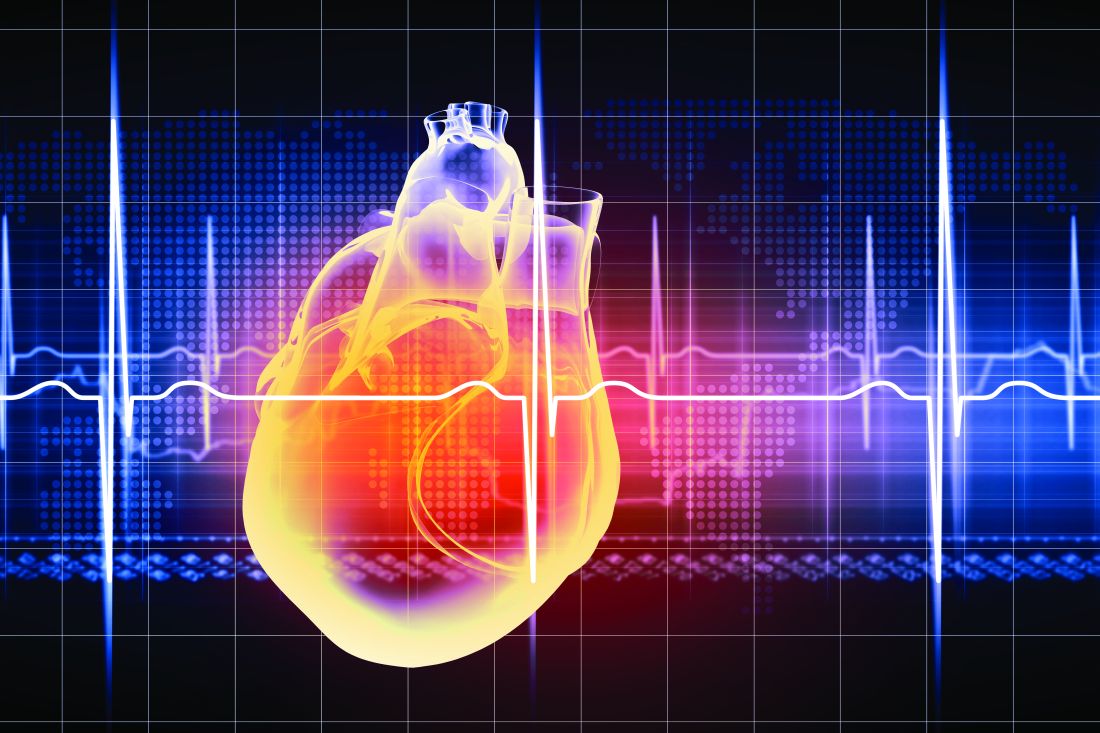User login
Patients with peripheral artery disease (PAD) were also more likely to have left ventricular diastolic dysfunction, according to a study published in the Journal of Cardiology.
The study enrolled 1,121 patients with preserved left ventricular (LV) systolic function. The mean age was 68 years and 56% of patients were men. A total of 200 patients (17.8%) had PAD; 33.0% of these had no symptoms, 54.5% had intermittent symptoms, and 12.5% had critical ischemia, according to Koji Yanaka, MD, and colleagues at the Hyogo College of Medicine, Nishinomiya, Japan.
Multivariate logistic regression analysis showed that PAD was an independent predictor of LV diastolic dysfunction (adjusted odds ratio, 1.77; P = .01).
“The prevalence of LV diastolic dysfunction was higher in patients with PAD than those without PAD. These findings suggest that patients with PAD should be evaluated not only for LV systolic but also diastolic function in echocardiography,” the researchers concluded.
The authors reported that they had no disclosures.
SOURCE: Yanaka K et al. J Cardiol. 2019 Feb 18. doi: 10.1016/j.jjcc.2019.01.011.
Patients with peripheral artery disease (PAD) were also more likely to have left ventricular diastolic dysfunction, according to a study published in the Journal of Cardiology.
The study enrolled 1,121 patients with preserved left ventricular (LV) systolic function. The mean age was 68 years and 56% of patients were men. A total of 200 patients (17.8%) had PAD; 33.0% of these had no symptoms, 54.5% had intermittent symptoms, and 12.5% had critical ischemia, according to Koji Yanaka, MD, and colleagues at the Hyogo College of Medicine, Nishinomiya, Japan.
Multivariate logistic regression analysis showed that PAD was an independent predictor of LV diastolic dysfunction (adjusted odds ratio, 1.77; P = .01).
“The prevalence of LV diastolic dysfunction was higher in patients with PAD than those without PAD. These findings suggest that patients with PAD should be evaluated not only for LV systolic but also diastolic function in echocardiography,” the researchers concluded.
The authors reported that they had no disclosures.
SOURCE: Yanaka K et al. J Cardiol. 2019 Feb 18. doi: 10.1016/j.jjcc.2019.01.011.
Patients with peripheral artery disease (PAD) were also more likely to have left ventricular diastolic dysfunction, according to a study published in the Journal of Cardiology.
The study enrolled 1,121 patients with preserved left ventricular (LV) systolic function. The mean age was 68 years and 56% of patients were men. A total of 200 patients (17.8%) had PAD; 33.0% of these had no symptoms, 54.5% had intermittent symptoms, and 12.5% had critical ischemia, according to Koji Yanaka, MD, and colleagues at the Hyogo College of Medicine, Nishinomiya, Japan.
Multivariate logistic regression analysis showed that PAD was an independent predictor of LV diastolic dysfunction (adjusted odds ratio, 1.77; P = .01).
“The prevalence of LV diastolic dysfunction was higher in patients with PAD than those without PAD. These findings suggest that patients with PAD should be evaluated not only for LV systolic but also diastolic function in echocardiography,” the researchers concluded.
The authors reported that they had no disclosures.
SOURCE: Yanaka K et al. J Cardiol. 2019 Feb 18. doi: 10.1016/j.jjcc.2019.01.011.
FROM THE JOURNAL OF CARDIOLOGY

